Solar Power: A Complete Guide To Off Grid Energy
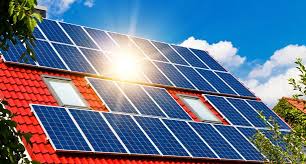
If you’re like me, and you live in a tiny house in the middle of nowhere, then creating self-sustaining power is probably on your mind. In this article Solar Power: A Complete Guide To Off Grid Energy, we’ll show you how to do just that!
Even if you don’t live in a tiny house, why wouldn’t you want electricity that could save you money, or eventually cost you nothing? Of course you’ll have to invest a bundle of cash in order to start this project, but the outcome could save you an immense amount of money in the future.
How Solar Works
Solar energy has been an ongoing development since the 1800’s, with the creation of the first solar cell by Charles Fritts in 1880’s.
The solar cell, otherwise known as PV cell (Photovoltaic) is a device that has the ability to convert light into an electric current, using what they call the photovoltaic effect.
The photovoltaic effect is the creation of electric current and voltage in a material when exposed to light, which is a chemical and physical phenomenon.
Originally photovoltaics where created to power small devices like calculators, or off-grid travel vehicles such as campers, or small cabins.
2018 is a much different time, going solar is a lot simpler, and can be more cost friendly than you would think. If you do decide to take the solar route, you could end up saving gobs of money on your electricity bill.
In this article i will breakdown everything you need to know about creating your own off-grid power producer using solar energy.
We will go through the steps you need to take in order to build your own, talk to a company that will install it for you, and how much it’s going to set you back.
Read on to find out why solar energy is the next BIG thing, and why YOU should invest in your own solar powered system!
How Solar Power Energy Works For You
If you were like me, and wondering how exactly solar power systems work when integrated into your home, then you’ve come to the right place!
Creating a simple, and solid power supply using solar energy is much easier than you think. When you decide that it is time to leave that money hungry utility company, setting up your own solar power can be pretty simple.
Lets break it down…
The Solar Panels
Solar panels are made up of photovoltaic cells, which convert light to DC electricity (direct current). If rays of light are hitting your roof, then your solar panels are converting that solar radiation into direct current electricity. In order to create power to run appliances or lights in your home, you’re going to need a device known as an inverter.
The Inverter
An inverter is the device in which direct current electricity being produced by the solar panels can be converted into AC electricity (alternating current). These inverters are typically installed in your garage or somewhere on the exterior of your home.
The Electricity Service Panel
The solar electricity gathered by your inverter is transferred to your electric panel, which then distributes the power to your home. This allows power to run to your appliances and lights.
If your panels are producing more electricity than needed, then the overflow
of electricity is dumped back into the utility grid, helping you stockpile solar credits.
Solar credits are credits that allow you to make money from the utility company from your over-produced solar energy.
The Company Meter
This meter is provided by the company you choose to go with for your solar panels. The meter will monitor the systems production and will send this information back to your provider via wireless signal.
If any problems arise, then this meter can notify your provider automatically, giving you 24 hour protection on irregularities happening throughout the system.
The Net Meter
Going back to solar credits, your net meter will measure the production of electricity from your solar power system. This includes the amount of electricity being drawn from your power grid, along with the amount of power being dumped back into the power grid.
If your solar panels are creating more power than you need, you’ll be awarded credit from the utility company. Sounds like a pretty sweet deal to me!
How Much Electricity Will Your Solar Power Panels Produce?
The amount of electricity produced by the solar panels that you choose, will ultimately be decided by a few different factors.
The size of the solar panels, and the efficiency of those solar panels are the two biggest factors in the amount of solar energy you will generate.
Now, in 2019, most high efficiency solar panels can be upwards of 23%! These solar panels, of course, are top of the line.
For residential solar panels, you will most likely see around an 18% efficiency rate, which is great compared to where we started in the 1950’s. The first solar cells were only seeing about a 6% efficiency rate.
For now, an average residential solar panel can produce upwards of about 320 watts. This can change of course depending on the solar panels size, and efficiency rating.
Figuring Out Your Usage
Before diving into buying solar panels you’ll want to figure out how many kilowatts of electricity your house uses in one month. Most households in America use about 1000 kilowatts a month.
To give you an example, a 65 inch x 39 inch solar panel is a little less than 18 square feet. This will produce about 265 watts of electricity per hour.
The amount of sunlight your roof sees in one day is ultimately going to determine how much electricity your panels will produce.
For example: if you are using a 250 watt rated panel, and multiply 250 by the amount of hours that your roof is exposed to light, say 4 hours, that gives you 1,000 watts (1 kWh) per day. You then multiply your daily kWh amount by 30 to see your monthly generated electricity for that single panel. In this case it would be 30 kWh.
Once you find out how many kilowatts your home consumes per month, then it can be very easy to find out how many panels you will need to keep your house powered for the month. A 30 panel system will give you about 7.5 kilowatts per month if each panel is producing 250 watts.
This is a rough estimate, so contacting a solar professional is advised. They can give you a much better idea on how much your specific roof, and location in the United States will effect your production of solar power.
How Much Does It Cost To Go Solar?
As the years go on, the cost of switching to solar decreases quite a bit. Now in 2019 you can expect to pay between $11,000 and $15,000 after tax credit.
The typical price per watt can be anywhere between $2.50 to $3.60, with the average U.S house using a system that supplies 6 kilowatts. This system would cost around $18,000 (gross solar panel cost).
This may seem costly, but most certainly worth it in the long run. Believe it or not this cost is 6% lower than last year!
To grasp the true cost of solar for your particular situation, you need to understand that prices will change from state to state, and the area you reside in.
Not only do prices very from each state, but they also depend on your electricity consumption. The more kilowatts your home uses, the more expensive it’s going to be upfront.
You may be thinking, “This is way to much money to put down on a solar power system” but i can assure you, you wont be taking $10,000 dollars out of your bank account to pay for this.
Many solar companies offer ZERO money down, and low-interest loans to get you set up to generate solar power. This makes it easier for you to start saving every month on your utility bill.
DIY vs Hiring An Installer
If you plan to buy, and install the solar panels yourself, you may pay a little bit extra in materials. Typically solar power companies can acquire solar panels at a much cheaper rate ($0.75 per watt) where if you were to buy your own solar panel, you may pay upwards of $1 per watt.
If you wanted to buy a 250 watt solar panel, you will most likely pay around $250 to $300 for each solar panel.
As much as i would love to tell you that the DIY route is a better option, its not. You need to consider everything that goes along with buying, and installing the solar panels yourself.
These added costs can include the inverter, solar batteries, and other necessary equipment needed for your particular set-up.
What Factors Impact The Cost?
When choosing to go with a solar panel company to do the work for you, they will present you with an all-in price. This is what is expected to be paid when the solar panels are installed on your roof.
As you research for the right company, you’ll begin to notice that the prices will very between each installer. How do they come up with these prices?
First, and foremost, the equipment is going to set each company apart from the other. No two inverters, or solar panels are created equal. The more efficient the solar panels, the higher the price. Of course you’ll see benefits with higher quality equipment, along with better hardware in order to produce more electricity.
Using better panels and hardware can provide you with more electricity with the same amount of sunlight, furthermore it’s likely that the system will come with a much more comprehensive warranty as well.
Beyond the equipment that needs to be installed on your roof, the labor and permit costs will also be a factor in your price package. It’s no walk in the park to get solar panels installed on your property. You’ll have multiple visits to your site to plan installation, filing the permits, and eventually installing the system. All of these things take time, and money.
Your house will also play a part in the cost of the solar panels being installed. If your roof slopes at 30 degrees, and faces the south, then installation should be rather simple for the company, considering no additional accommodations will need to be made. If your roof has skylights, dormers, or is made up of multiple levels, then you could see a slight rise in the price.
The Important Questions To Ask Before Choosing Your Solar Power Energy Company
Licenses and Insurance:
- Are they qualified with a business license and insurance policies for your state?
- License number?
- Are they NABCEP(Solar PV Installation Professional Certification) Certified?
- Do They Design and install the systems themselves? Do they subcontract? are the subcontractors certified?
- Do they provide a master electrician on site when installing?
Installer Experience:
- How long have they been in business?
- Are they local? Nationwide?
- How many systems have they installed?
- Customer reviews? References?
- Do they work with your utility company?
Warrenties Replacement/ Repair?:
- Who to contact when a problem arises?
- Which components are covered under warranty? Do they cover shipping or labor costs when something needs replaced?
- Does the warranty cover your roof?
- If placed on the roof, When needing roof repairs, what is the process used to remove and replace the solar panels?
- Is there a performance guarantee? (Promised amount of power produced)
Solar Leases & PPA’s:
- Will a lien be placed on the property for your solar power system? Selling your home can be difficult if you don’t make payments on your solar power system.
- Is there an insurance policy on the system or do you need to take out an additional homeowners insurance?
- Utility Inflation Rate used to calculate savings? Will a more conservative estimate effect the value proposition going solar with their company?
- Does the lease or PPA payment increase annually? How much?
- What is the minimum performance guaranteed by the system? Compensation if it does not reach those minimums?
- Can your system produce more power than needed? Will you be charged more?
- Is there a fee when breaking the contract early? (when moving)
On Site Visit Questions:
When the installer is on site, they will go through the following steps:
- Measurements of your roof, (if thats where you decide to place them)
- Shade analysis test, to provide an accurate quote
- Answer any questions you may have about equipment, and provide you with answers about the equipment that is best for your property.
Top List Of Solar Power Energy Companies You Should Consider
Finding the right solar energy company takes time, and research out of your day. We wanted to make things easier for you by providing a short list of companies that we think have the best reputation throughout the United States.
SolarCity
This solar energy company is a sister company to the very popular Tesla Inc. SolarCity takes the research and technology done through this smart energy company, and provides affordable and cutting edge solar plans with excellent guarantees and warranties. They offer services in 21 states for those in business, homeowners, and even government planners.
Vivint Solar
The solar contractor Vivint Solar is another great solar energy company with the ability to save you money each month on your utility bill, while decreasing the impact you have on the environment. They offer four different payment plans, with warranties, and performance monitoring on your solar panels. With the third largest coverage in America, they operate in 16 different states.
Legend Solar
Legend Solar is a company that has been in business, and providing solar energy since the 1980’s. This company uses only SunPower solar panels, which can be costly, but also very long lasting. If you live in Utah, Montana, Idaho, Arizona, Wyoming, Oregon, and Washington, then Legend Solar is going to be one of the best options. They offer excellent warranties, and amazing energy production.
Sunnova
With strong warranties, a great monitoring service, and good guarantees, Sunnova is definitely a competitive company in the solar energy industry. Sunnova unfortunately do not install the solar panels themselves, but work with trusted and licensed partners to make sure the work is done right. Sunnova operates in 17 different states including Colorado, Oregon, Louisiana, Texas, Pennsylvania, Hawaii, and New York.
Sunrun
With all of the solar energy companies out there, Sunrun may be one of the best. They offer an extensive list of plans that you can choose from, with warranties covering workmanship, and roofing on every one of its’ installs. Because Sunrun offers so many different options on plans, it makes it very easy to budget for your solar energy plan.
Top 7 Solar Panel Kits You Can Buy On Amazon Right Now!
Finding the right solar panels for your tiny house, backyard villa, or cabin retreat may be head numbing, and time consuming. We wanted to make things easy for you! We searched the internet, and tried to put the best products in one place!
In this part we will break down the Top 7 solar panel kits you can buy on Amazon right now! Take a look below, and find out if any of these DIY kits are right for you, and your tiny living quarters.
400 Watt Solar Panel Kit
Are you looking to produce clean, free energy from the sun? This 400 Watt Solar Panel System by WindyNation will help supplement power for any tiny house on wheels, tiny cottages, or backyard sheds!
If you don’t need to supplement all of your electricity, these are great for emergency back-up power. These kits are a great way to get into solar energy without spending thousands of dollars on massive systems.
Not only are they exponentially cheaper, but they will also help you to learn exactly how DIY solar panel kits work! You can check out the specs and customer reviews by clicking the link below!
WindyNation 400 Watt Solar Panel Kit On Amazon
200 Watt Solar Panel Kit
If you don’t need all of the power that the 400 watt system provides, then consider the 200 Watt Solar Panel Pack from WindyNation.
This system is perfect for supplementing electricity to run the smaller devices in your home, such as lights, cellphone chargers, etc….Their aren’t as many moving parts in this system, and would be great for any beginner looking to make the move to solar!
You can learn more about this product, and read the customer reviews from Amazon by clicking the link below!
WindyNation 200 Watt Solar Panel Kit On Amazon
500 Watt Solar Panel Kit
Maybe you need a little bit more power then the previous two….The 500 Watt solar panel kit by Eco-Worthy could be the system you’re looking for. With 5 polycrystalline solar panels, you can expect 12/24 volts with this system.
Why not start collecting free, clean energy from the sun today?! These systems are perfect for tiny homes, backyard villas, and even boats/RV’s. Check out the customer reviews, and product specs by clicking the link below!
Eco-Worthy 500 Watt Solar Panel Kit On Amazon
100 Watt Solar Panel Kit For Beginners
Are you freaked out by all of the wires and connectors that some of these systems have? We understand. Sometimes the kits can be overwhelming, so we found the perfect solar panel kit for beginners.
The 100 Watt Solar Panel Kit by Renogy can produce anywhere from 12 – 14 volts of electricity.
I know, that’s not much power, but if you want to learn about how solar systems work, and supplement power in a tiny house, boat, shed, or RV, then you should really consider starting small with this system!
Renogy 100 Watt Solar Panel Kit On Amazon
800 Watt Solar Panel Kit
Maybe it’s time for something bigger and better to fulfill your solar needs. Take a closer look at the 800 Watt Solar Panel Kit from Eco-Worthy. When running optimally, you can expect around 22 Volts, and 6 amps.
The wave inverter has the capability of producing 1500Watts and is good for 24-110 volts of electricity. This system is a little bit more expensive than the others, but it produces a good amount of power, and could supplement electricity in tiny homes, RV’s, boats, or work sheds.
To take a closer look at the specs, read the customer reviews, or even purchase this kit, then just follow the link below!
Eco-Worthy 800 Watt Solar Panel Kit On Amazon
1000 Watt Solar Panel Kit
One of the biggest solar panel kits that we could find, that you can buy right now, would have to be the 1000 Watt Solar Panel Kit by Eco-Worthy. This solar kit has the ability to produce supplemental electricity for anyone looking to make the move off-grid.
If you have a tiny home, a mobile home, RV, boat, or even a backyard shed, then this solar power kit will work for you! To learn more about this product, you can check out the specs, read the reviews, and purchase this solar panel kit below!
Eco-Worthy 1000 Watt Solar Panel Kit On Amazon
800 Watt Solar Panel Kit By Renogy
One of the more highly recommended solar panel kits on Amazon would have to be the Renogy 800 Watt Solar Panel Kit. This kit is equipped with everything you see in the picture above, from connectors, to controller, and is guaranteed to produce you free, clean solar energy.
This system is perfect for backup power to your already installed system, or supplementing electricity to run smaller electronics and lighting. To learn more about the product specifications, or to read reviews from previous buyers, check out the link below!
Renogy 800 Watt Solar Panel Kit On Amazon
Conclusion
Solar energy is the next big thing, and will be a huge part of our energy production in the future. The sooner you make the move to solar energy, the sooner you can save money every month on your utility bill.
Lets face it, making the move to solar energy is no walk in the park, but if you are willing to look past the time, and money involved, it will most certainly be worth it for you and your family in the future.
Us, as humans, need to be more aware of our footprint, and what better way to help our planet than to collect energy from the sun?
If you’re serious about moving to solar, do your research, take the necessary steps, and you’ll find yourself producing sustainable energy for years to come.
You can find a payment plan, some involving NO money down, and you can even make money from your utility company in the process.
Thanks for taking the time to read this article, and i hope this has changed your mind about solar powered energy, and the wonderful benefits it can have on our planet, and in your life!

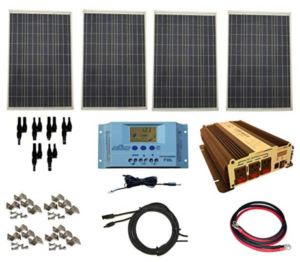
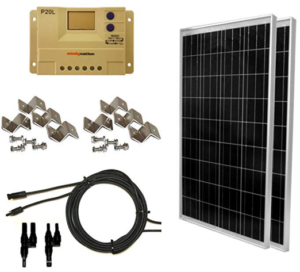
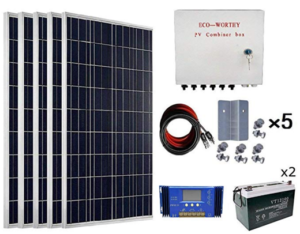
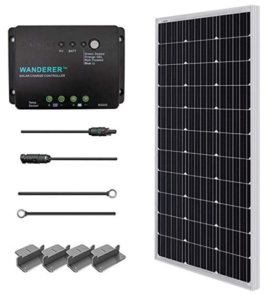
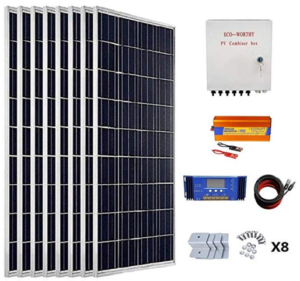
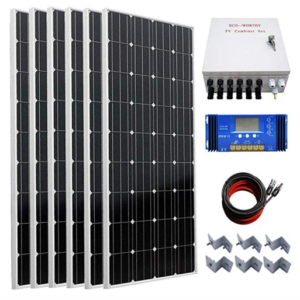
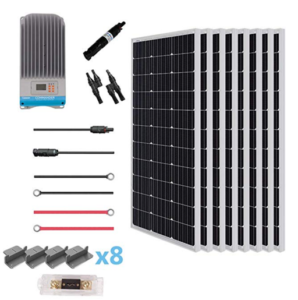
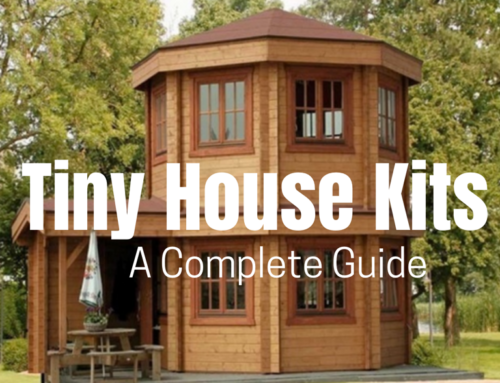
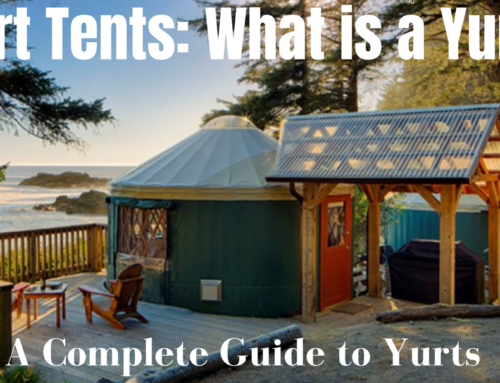

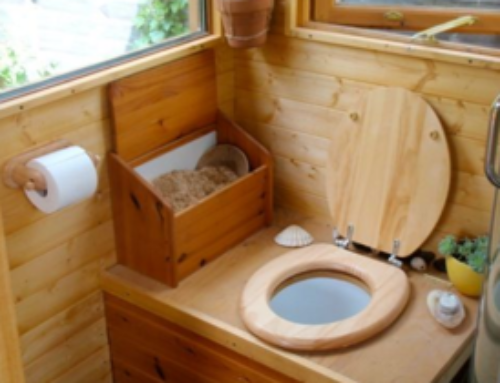

Leave A Comment